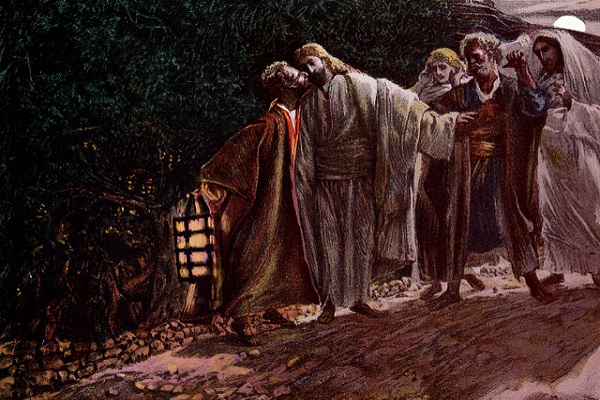
A recently uncovered church painting of Judas in England escaped destruction and is extremely rare.
A medieval era church painting, conserved by Fitzwilliam Museum in Cambridge, may have escaped destruction by listing the Ten Commandments on its backside. The concerned painting, The Kiss of Judas is a rare church painting to escape being destroyed or defaced during the English Civil War. It also avoided 16th century ravages. A church in Northamptonshire, Church of St. Mary, sold the painting to the museum in lieu of funds for the former's restoration.
Church Painting of ‘The Betrayal’ Survived by Being Turned Around[/tweetthis]
The Reformation period saw an estimated 75% of religious artwork destroyed, making this artwork an extremely rare specimen. The panel measures 1.73m x 74cm. The writing on its back suggests that the Catholic image was deliberately turned around. Its back was made into painted board. It is estimated that The Kiss of Judas was drawn and painted around 1460. Medieval vibrant colors were used. Traces of writing, albeit faint, were found on the back during its conservation process.
The brightly painted panel showing Christ's betrayal by Judas Iscariot escaped destruction as someone from that era reversed it and utilized its back. It is believed that the back displayed the Old Testament's Ten Commandments. This recycling saved the painting from the widespread destructive activity which he Puritans inflicted on Catholic objects during the English Civil War.
A 16th-century painting of Judas survived this long thanks to ingenious repurposing https://t.co/W9PQa5wJCY via @qz
— Doug Coulson (@dougcoulson) November 27, 2015
Judas painting survived Reformation by being turned around; while 97% of art was lost https://t.co/C7TkLncA7r @DavidPriceUCL @AnthonySmithVP
— Paul Ayris (@ucylpay) November 27, 2015
The panel was later reworked for the use of a Protestant church, the vibrantly colored oil may have been used as decoration to be positioned above chancel arm or found to have function as a rood screen. Ian Tyers, a Dendrochronologist, discovered that trees chopped down in the middle of the 15th century from the Baltic region constituted the panel structure. Dr. Lucy Wrapson, who examined the panel and helped restore it, said that there was no way for sure to find out why the painting was recycled in this manner. She said it could have been simply a way of saving expenses or it could have been purposefully saved. Wrapson described the painting as fascinating. The cleaning and conservation work has revealed its vibrant medieval colors.
According to Wrapson, the panel arrived in her lab in an extremely poor state, covered in dust, discolored varnish, cobwebs and bat feces. The whole panel was dark and experts could not see what was present in the back as it was covered with a plywood board. The panel tells a story of survival.
